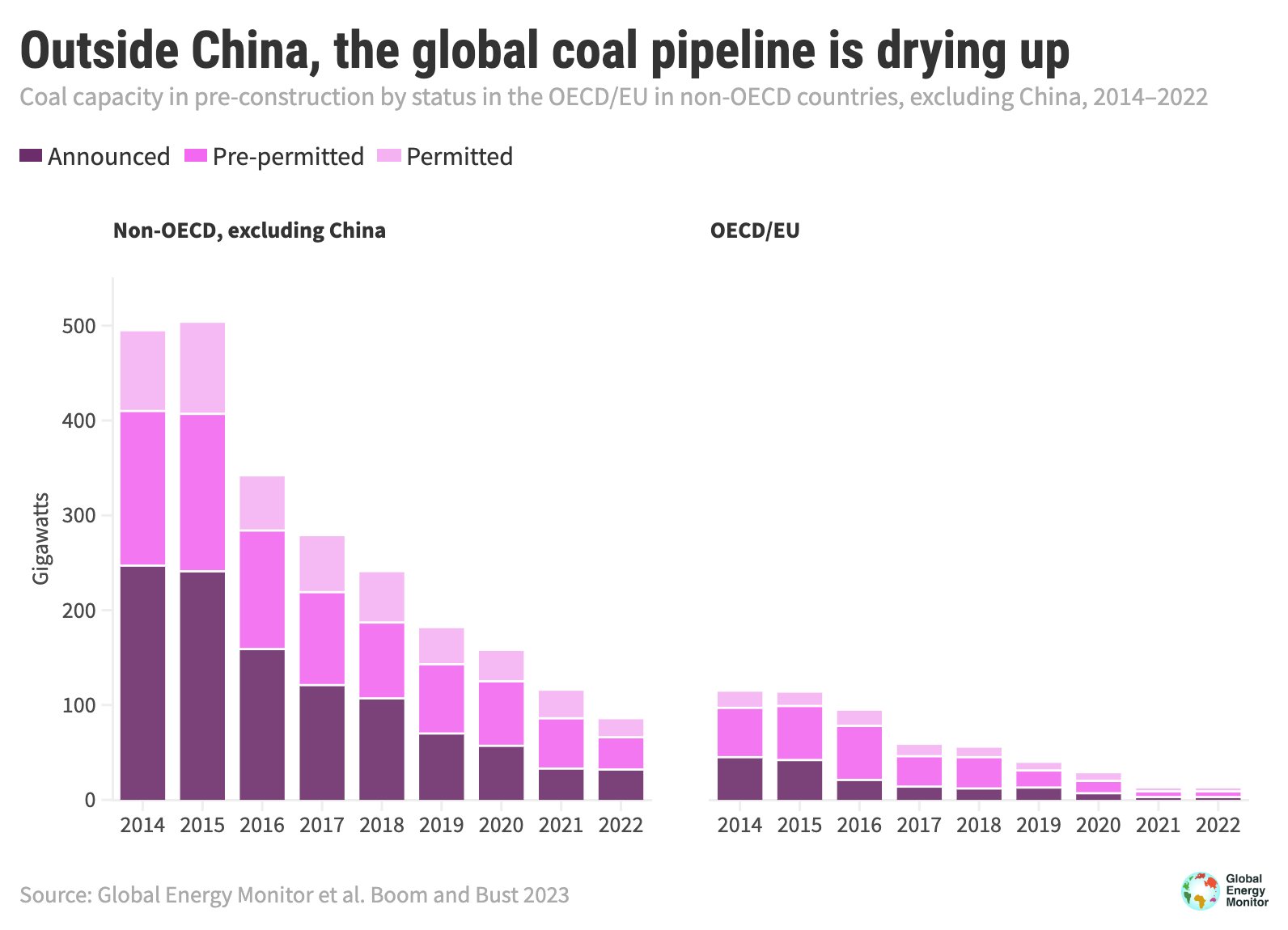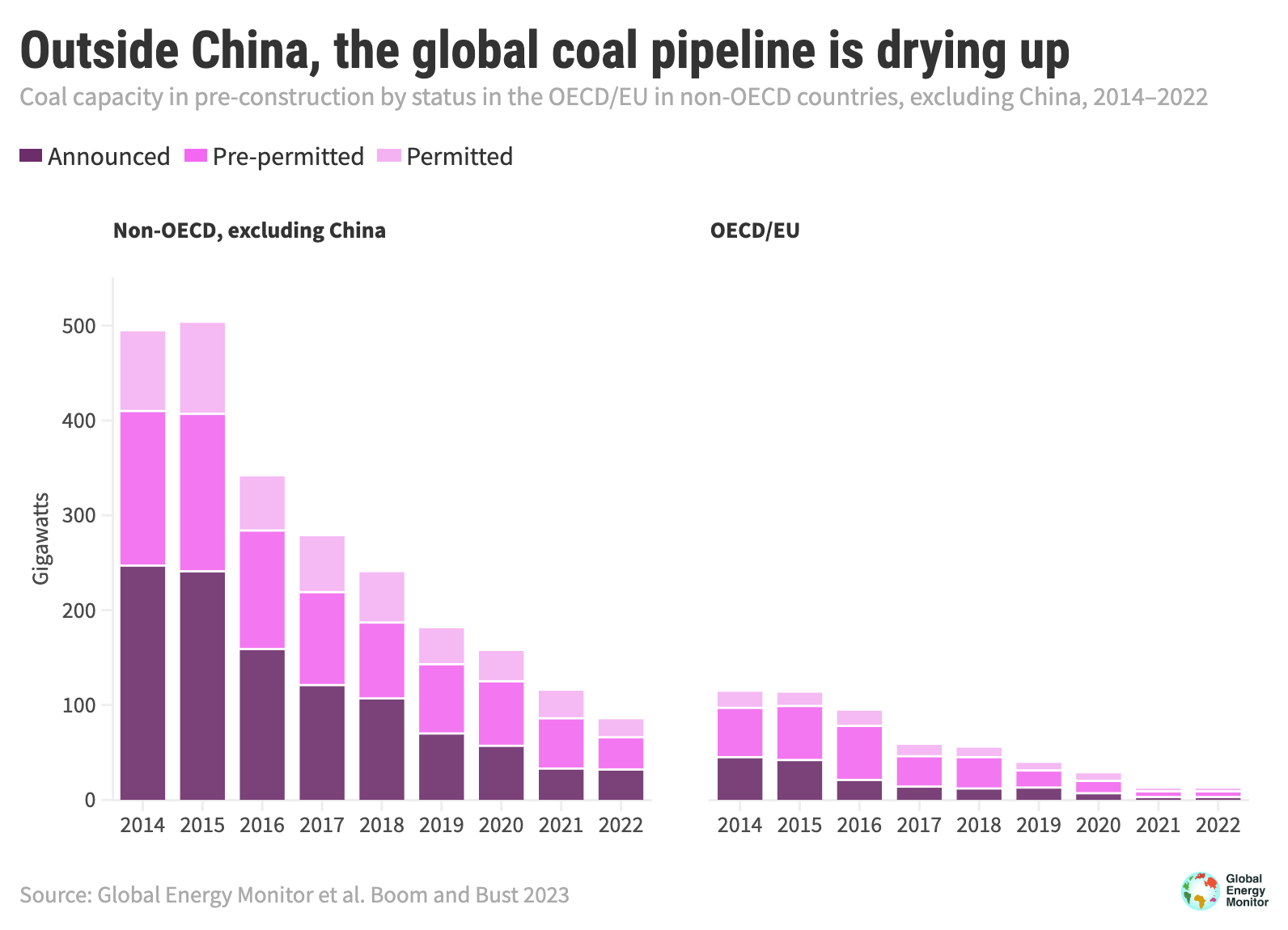The upheaval in the global energy sector in 2022 created renewed speculation of a “coal comeback,” but the end of coal nevertheless remains in sight. Today, nearly one-third of operating global coal capacity (580 gigawatts (GW)) has a phase out date, and much of the remaining capacity (1,400 GW) is under the purview of carbon neutrality targets. Just 5% of the global coal fleet stands beyond the scope of a national commitment—a reality nearly unthinkable a decade ago.
But the pace of the global coal phase out is not yet compatible with the goals of the Paris climate agreement. Last month, the UN Secretary-General António Guterres outlined an “Acceleration Agenda,” renewing calls for an immediate end to new coal, and for a phase out of existing coal by 2030 in developed countries and 2040 in the rest of the world. Under such a scenario, only 70%
of OECD operating coal capacity is currently on pace (330 GW), and outside the OECD, only 6% of coal capacity has a known closure date before 2040 (93 GW).
In terms of new coal, while coal under development—or coal in pre-construction and construction—has collapsed by two thirds since the Paris agreement, nearly 350 GW of new capacity is still proposed across 33 countries, and an additional 192 GW of capacity is under construction. China’s pre-construction and construction capacity surpassed the rest of the world’s in 2021, and the gap
widened in 2022. New coal capacity under development in China increased by 38% (266 GW to 366 GW), while the capacity in the rest of the world decreased by 20% (214 GW to 172 GW). China now accounts for two thirds (68%) of global capacity under development, up from 55% a year ago.

Urgent action is necessary to ensure an end to coal and a fighting chance at a livable climate. The IPCC has stated the necessity for “rapid and deep, and in most cases immediate greenhouse gas emission reductions.” To accomplish this, countries need to translate announcements into plant-by-plant retirement plans as well as ramp up phase out commitments. Details on how current and future policies and funds will be implemented to impact coal retirement dates and ensure a swift and equitable end to new coal will
be essential. The internationally-agreed coal power phase down is a work in progress. But whatever the case, 2022 provided an object lesson in the endemic weaknesses of the coal sector. Despite some seemingly favorable conditions—oil and gas shortages, outages at nuclear plants, and severe weather events that curbed hydropower—the “coal comeback” failed to materialize in much of the world even if coal is not yet dead.

This report is lead by Global Energy Monitor with CREA, E3G, Reclaim Finance, Sierra Club, SFOC, Kiko Network, CAN Europe, Bangladesh Groups, ACJCE, Chile Sustentable.
CAN Europe contributed to this report with information on Turkey. Some of the takeaways are:
-
Turkey has 11-GW of coal plants in the pipeline, which is unlikely to be built because of financing and legal challenges. This contradicts Turkey’s National Energy Plan that envisages much less new coal power capacity by 2035
-
Air pollution, water pollution, and concerns about the climate crisis in Turkey have contributed to the loss of the coal industry’s social license to operate
-
Coal is not making a comeback in the European Union. What appeared to be a spike in coal capacity added only 1% to total EU coal generation in 2022.
-
No EU country, nor investors/financiers, revised their plan to phase out coal beyond 2030, the direction of travel is clear.
![]()
![]()
![]()

![]()
![]()
![]()
DOWNLOAD FULL REPORT – ENGLISH



